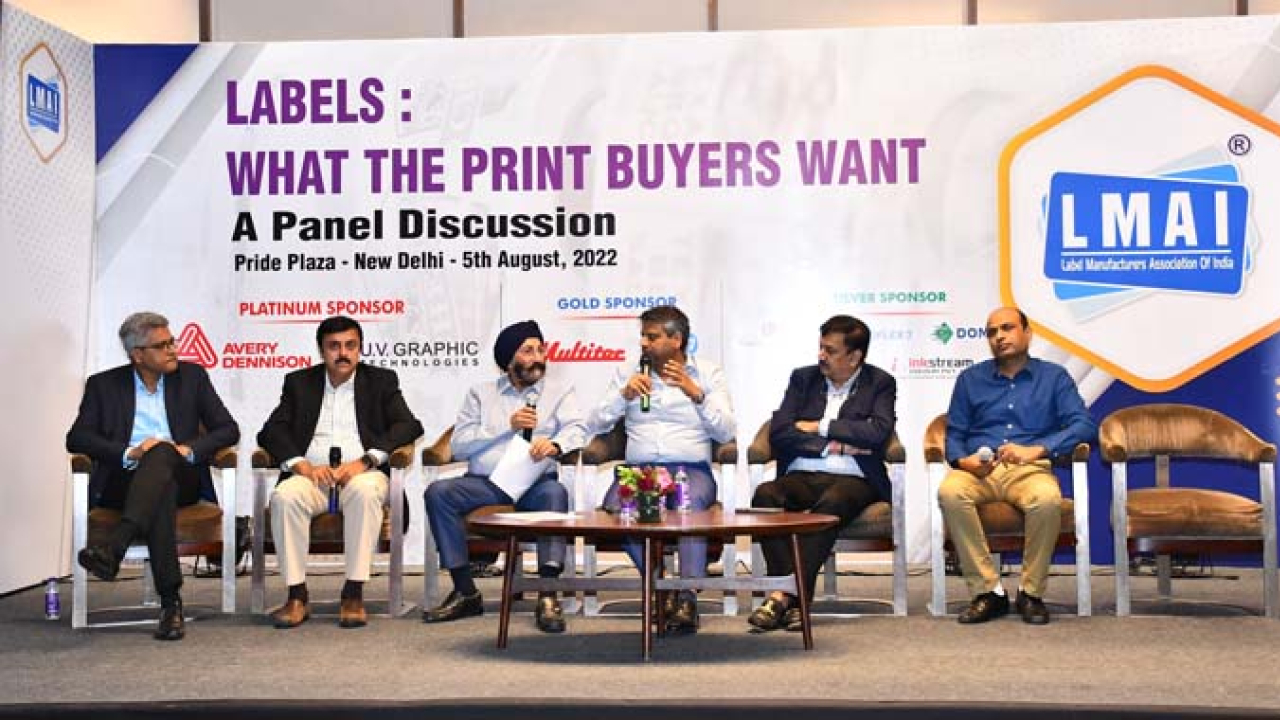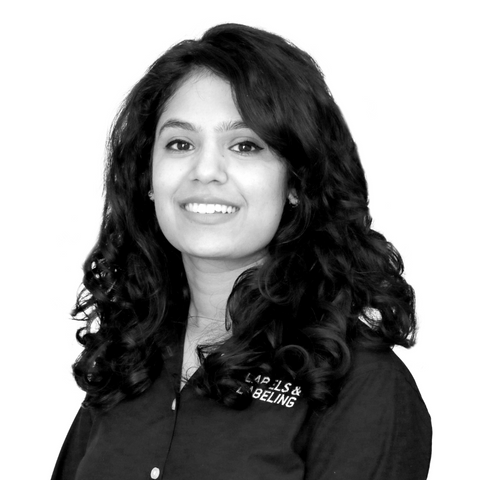Print buyer expectations
Label Manufacturers Association of India (LMAI) hosted a panel discussion on the topic ‘What the print buyers want?’ in New Delhi, India. Moderated by industry veteran Harveer Sahni, chairman of Weldon Celloplast and director of LMAI, the panel discussed the expectations of print buyers and brand owners.

The panel included Sanjeev Sharma, director, product management, Avery Dennison; Sanjay Ghoshal, senior general manager and head of packaging, Diageo India; Naveen Stuart, cluster packaging manager, Reckitt; Nirav Shah, founder of Letragraphix and Anil Namugade, founder and director of Trigon Digipack.
The discussion kicked off with expectations of brand owners from materials suppliers in terms of aesthetics, sustainability and ability to run on the production line.
Listing brand owners’ expectations, Ghoshal says that brands use labels for customer engagement. For any product category, 25 times more new brands are coming into the market creating clutter on supermarket shelves and leading to 25 times less visibility. Quality, finish and aesthetics in labels create consumer engagement and lead to a final purchase decision.
Secondly, Ghoshal adds, labels should be end-to-end sustainable, not just the material but right from production to end. ‘Earlier, we would take, make and waste, but now we want to take, make and recycle. The assumption is that we [packaging companies] pollute the most. It is our responsibility to reduce waste,’ he says.
Premiumization is another important factor that labels need to address. ‘Margins on products are decreasing. To have stable profit and loss, brands need premium labels. Small quantity with high turnaround labels is in high demand for personalization, adding multiple variants and hyper localization,’ he says.
From a digital label converter’s point of view, Namugade adds that converters need a partner who can help them execute sustainability and boost label design capability. Print buyers want value in the label creating process including embellishment.
As the sole material supplier in the discussion, Sharma says that Avery Dennison is developing new products. ‘We like the fact that brands are talking about sustainability. We are equal partners in the initiative when there is a pull from the industry. As a labelstock manufacturer, the biggest challenge for sustainability is how we can enable recyclability because of inks and adhesive.’
He explains that this could be addressed by working with ink suppliers who can make inks that can come off during the cleaning process.
Avery Dennison is also working with wine and spirit brands looking for easy label removal technologies during the peeling process. The company is developing an adhesive that can come off easily with a manual and automated wash-off process.
The company has also developed adhesives that can help brands retain brand protection.
‘Earlier, labels would come off on hair dryers. We have developed adhesives that can sustain high temperatures and stay stuck to containers. New European regulations for pharma require adhesives and
labels to be as per EU norms. We developed these products first in India for converters to enable them to export to Europe,’ Sharma explains.
Design and quality
Brand owners are now becoming discerning in terms of label finish, sustainability and design encouraged by globalization. The overall expectation of the quality of packaging has skyrocketed in the last few years, Ghoshal says.
Globalization and e-commerce have also influenced consumer purchase behavior ultimately influencing expectations of quality. The quality of products on-screen needs to match what is delivered.
Social media has enabled customers to voice their opinions in public if they are unsatisfied with product quality pressuring brands to maintain quality, Stuart highlights.
He adds that label design should be replicated as desired by brands. If not, it is considered a quality defect. Quality of print is crucial in the design process. Cooperation between designer and label converters is needed to create a printable design.
Namugade agrees: ‘There is a huge gap between what is designed and what you get. Converters need to collaborate with designers and brands to ensure that the design created is replicated as expected.'
Digitization in labels
Analog and digital technologies are learning to coexist as brands demand fast turnaround.
Digital printing offers speed, which is important, but so is volume, Stuart says. ‘We need a technology that can offer both. We did a promotional activity with Dettol last year. We needed speed and variable data printing capability, so we chose HP for it. But if we want labels for a volume product, we cannot go with digital.’
Brands are highly interested in consumer engagement campaigns.
‘These campaigns need to be done regularly for brands to be aware of printing technologies. The requirement of print is dependent on what technology you choose. Hybrid technologies can also do amazing jobs like customization,’ Namgande says.
Digitization is in process of becoming a norm in the industry, according to Sharma. ‘We used to talk about speaking labels 10 years ago but today it is possible through RFID and QR codes.’
Adding to his point, Ghoshal says that Diageo is using digital technologies in labels such as AR in the alcoholic beverage segment since liquor products cannot be advertised on TV.
‘Labels come alive in front of consumers. Extending labels through RFID, NFC and AR is going to be a reality in the next few years for better value and engagement,’ Ghoshal says.
The panel agreed that short-run jobs will become a standard in the future as the market sees the entry of new start-ups that need hyper localization, experimentation and personalization.
Start-ups tend to target young consumers who prefer e-commerce shopping. They need customization on packaging where digital can help.
Rising material costs
The prices of raw materials have increased, more so, during the pandemic.
Sharma says that Avery Dennison is ensuring continuous material supply in the last two and a half years.
The market has been seeing inflation for many years, but the pandemic has triggered it further. Label buyers want products that can give the same performance on low material usage.
Stay up to date
Subscribe to the free Label News newsletter and receive the latest content every week. We'll never share your email address.


